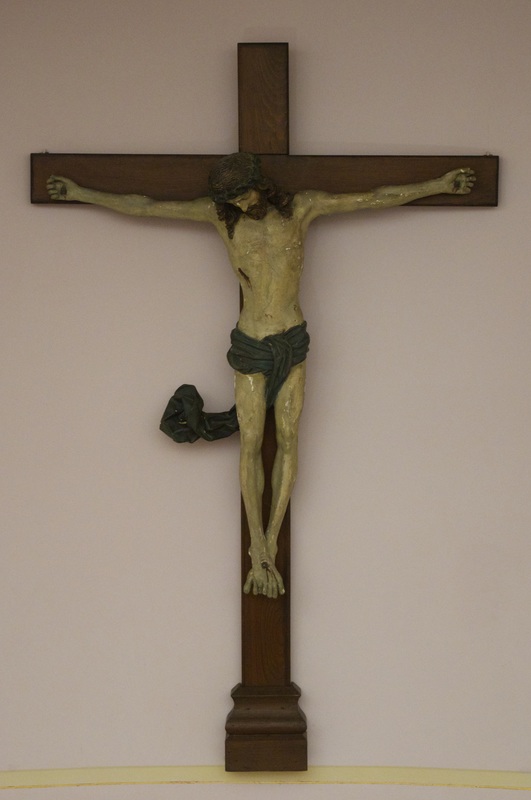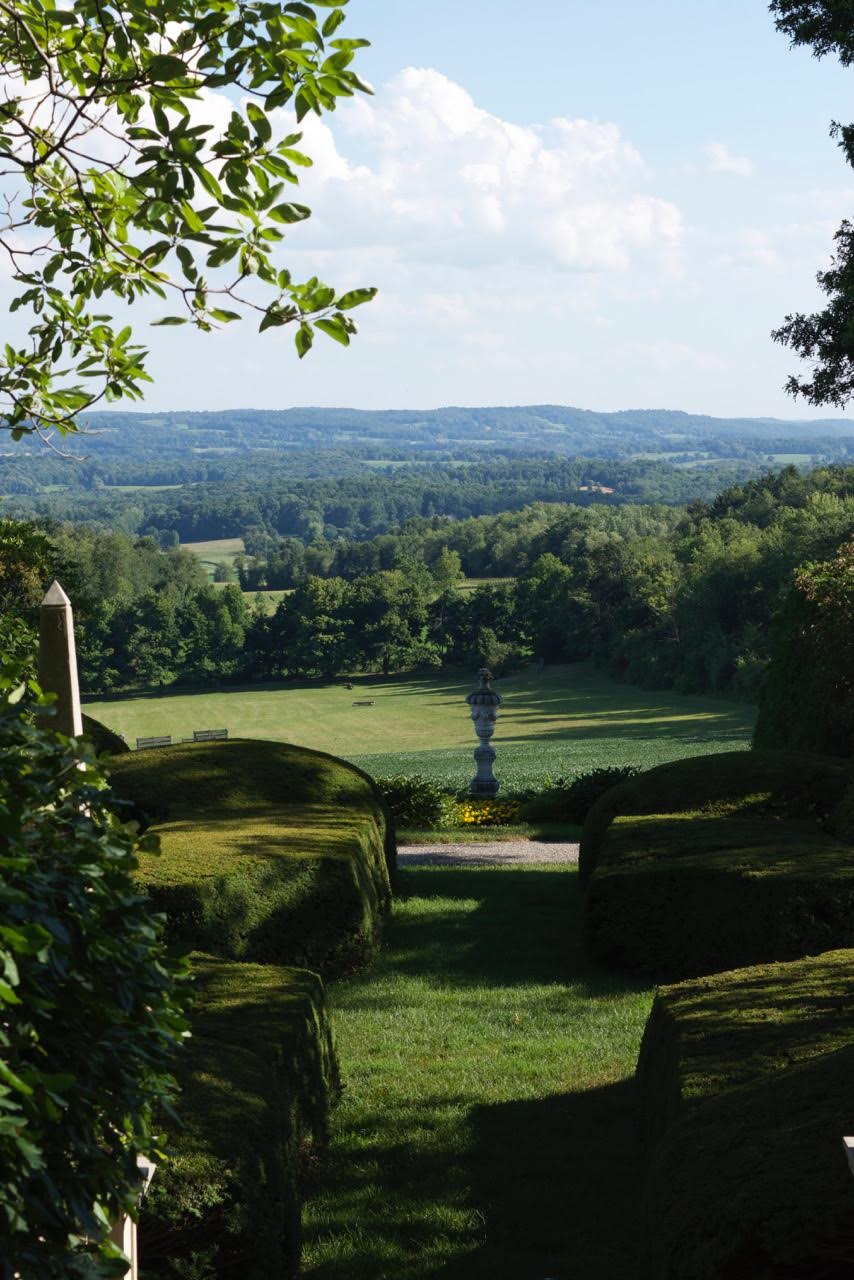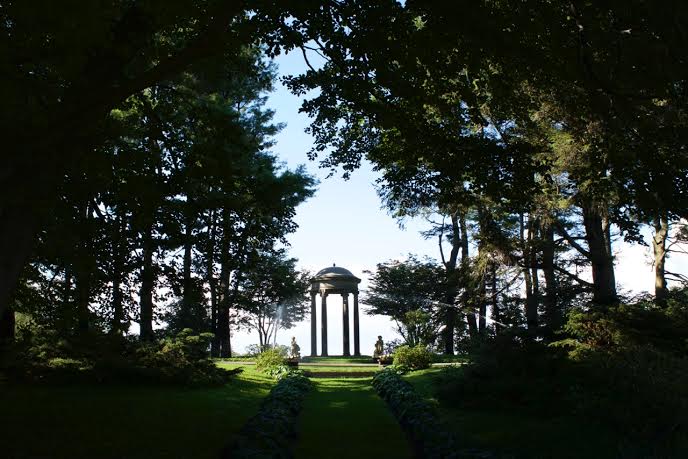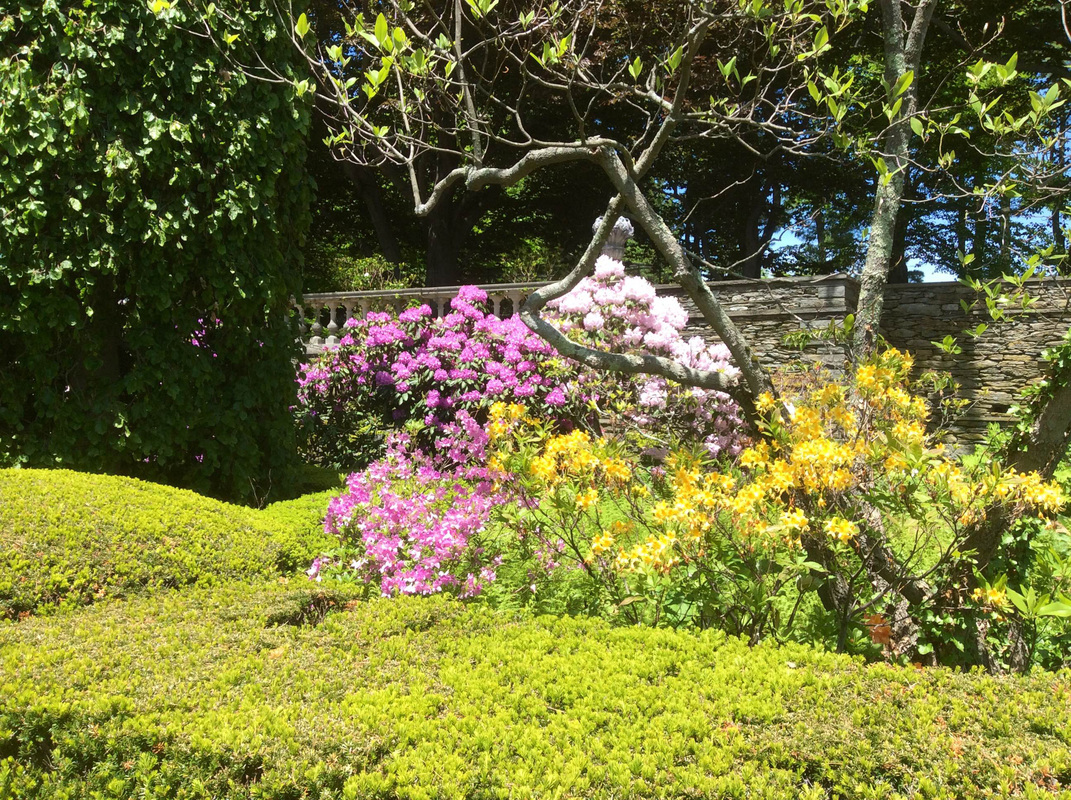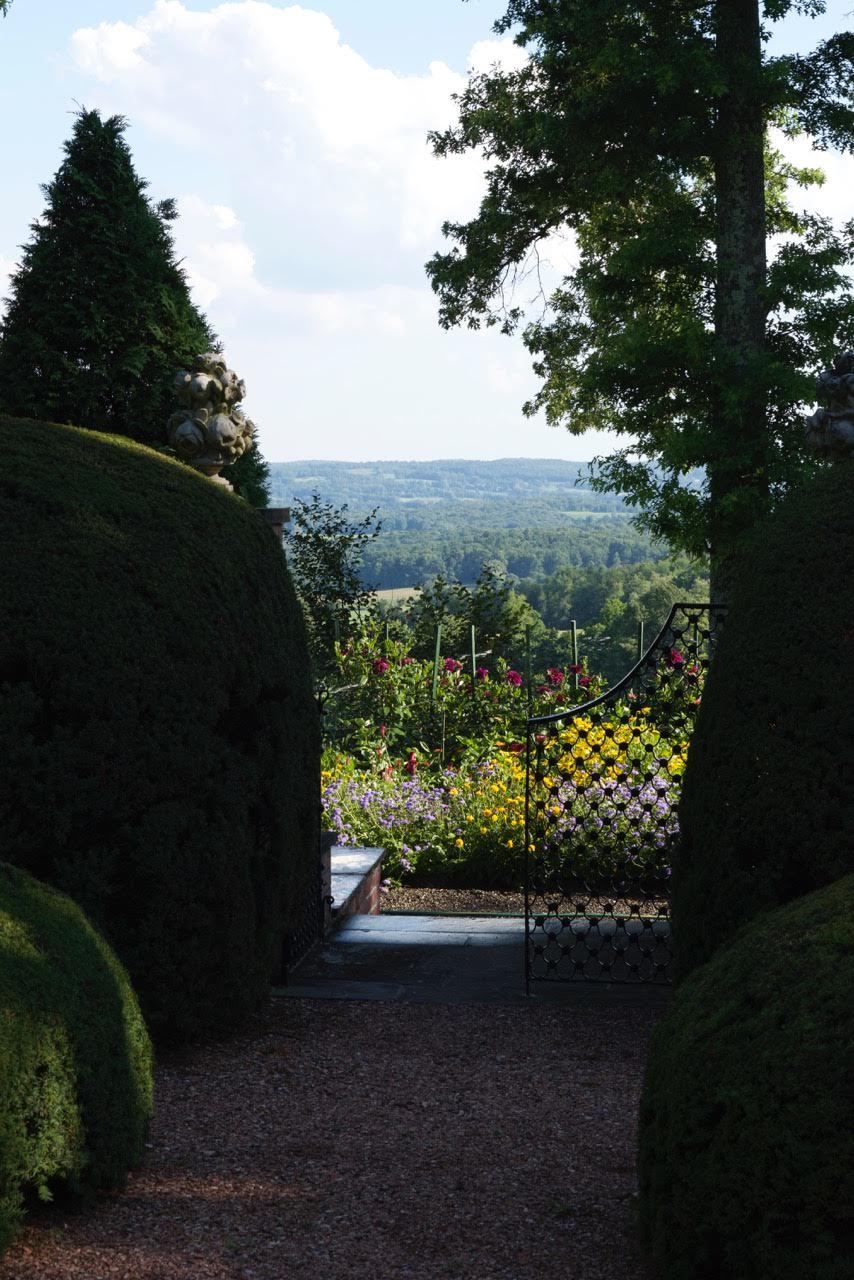 This has everything I love - beautiful house, gardens, landscaped farmland views...and even a Little Oratory!
I have just had an email from a former student of mine at Thomas More College of Liberal Arts, Nicole Martin who tells me that she and two other recent graduates, Amy Green and Gracey Lloyd have spent the summer at the Weatherfield estate in New York State cataloguing the art collection.
This has everything I love - beautiful house, gardens, landscaped farmland views...and even a Little Oratory!
I have just had an email from a former student of mine at Thomas More College of Liberal Arts, Nicole Martin who tells me that she and two other recent graduates, Amy Green and Gracey Lloyd have spent the summer at the Weatherfield estate in New York State cataloguing the art collection.
The estate is 1200 acres, 20 miles of carriage and walking trails, with a three-acre formal Italian/English medieval garden. The house is Georgian style brick and brownstone. As Nicole said to me, 'It is very beautiful and very interesting!' It certainly is.
The late owner Chauncey D. Stillman was of "old" New York money and he built up this estate in 1950's and 60's. He converted to Catholicism and gave generous donations of money to the church and Catholic organizations (including Thomas More College).
The estate website tells me that the chapel, which he called his 'Oratory' (I am liking this more and more!) contains a painting by the Spanish baroque master, Murillo; a 16th century Swabian crucifix and a mannerist painting from the school of the 16th century Greek painter based in Spain, El Greco.
What a place to spend a summer. Thank you for sharing this with us Nicole!
— ♦—
My latest book the Way of Beauty is available from Angelico Press and Amazon.
—JAY W. RICHARDS, Editor of the Stream and Lecturer at the Business School of the Catholic University of America said about it: “In The Way of Beauty, David Clayton offers us a mini-liberal arts education. The book is a counter-offensive against a culture that so often seems to have capitulated to a ‘will to ugliness.’ He shows us the power in beauty not just where we might expect it — in the visual arts and music — but in domains as diverse as math, theology, morality, physics, astronomy, cosmology, and liturgy. But more than that, his study of beauty makes clear the connection between liturgy, culture, and evangelization, and offers a way to reinvigorate our commitment to the Good, the True, and the Beautiful in the twenty-first century. I am grateful for this book and hope many will take its lessons to heart.”






